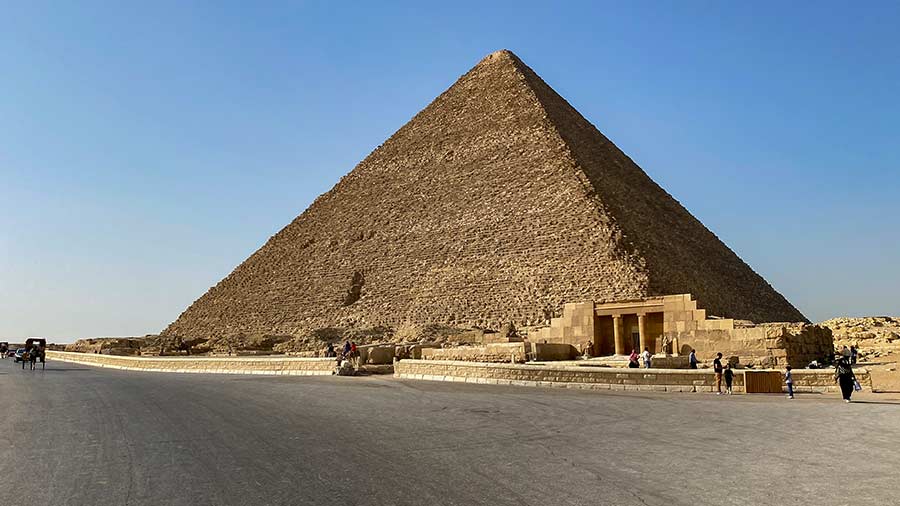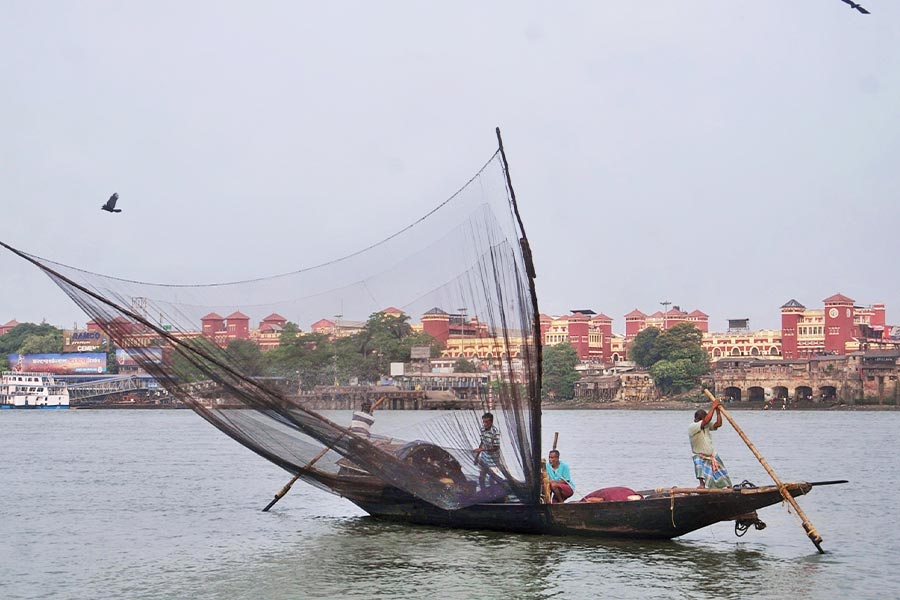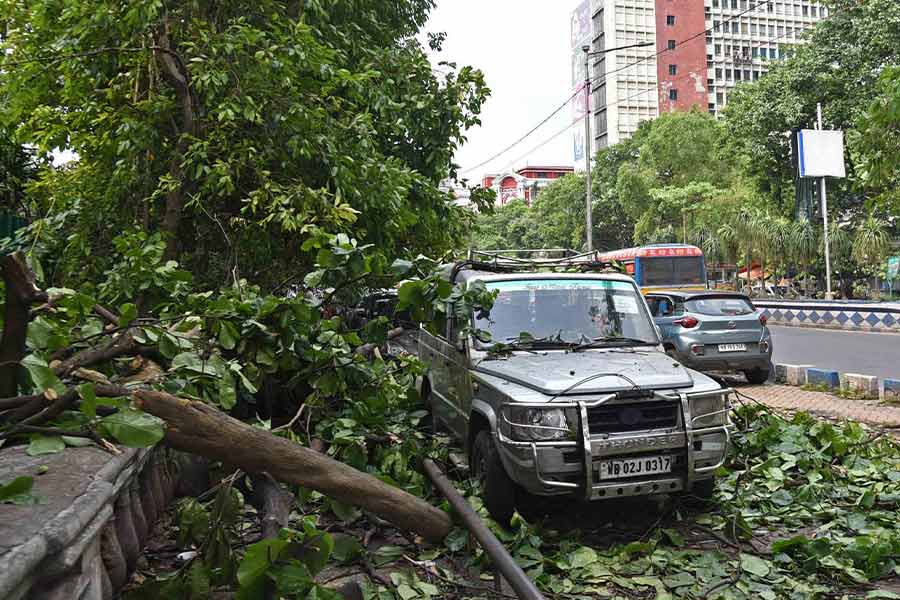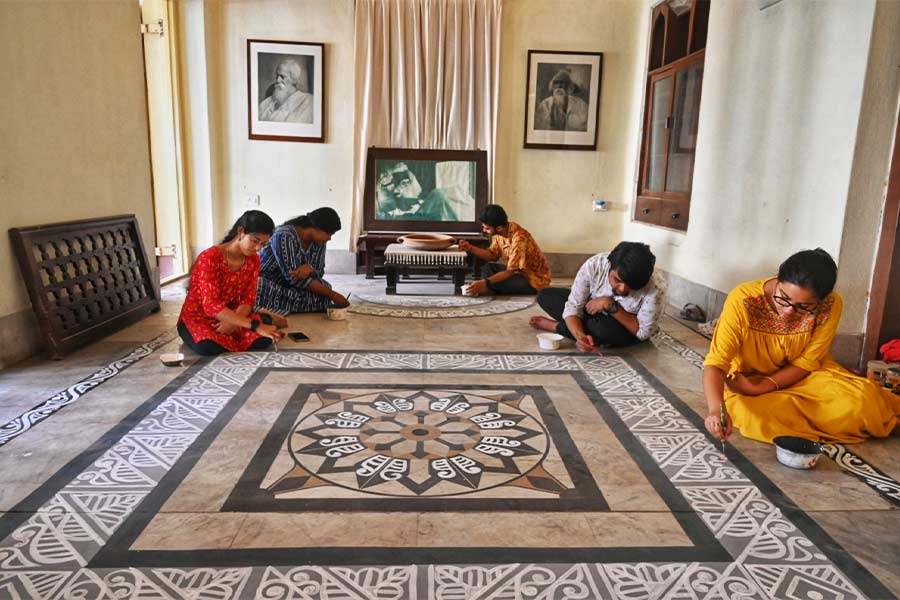Right near the border with Sudan, there is perhaps one of the most famous temples in Egypt. To be precise, not one, but two temples were once lost in time and covered almost in their entirety by sand. Once discovered and excavated, these temples faced perhaps another challenge of being completely submerged by the waters of Lake Nasser which formed after the construction of the high dam. What happened next was just a sheer engineering marvel accompanied by archaeologists from across the world to completely relocate the temple to higher ground.
The Great Temple of Abu Simbel
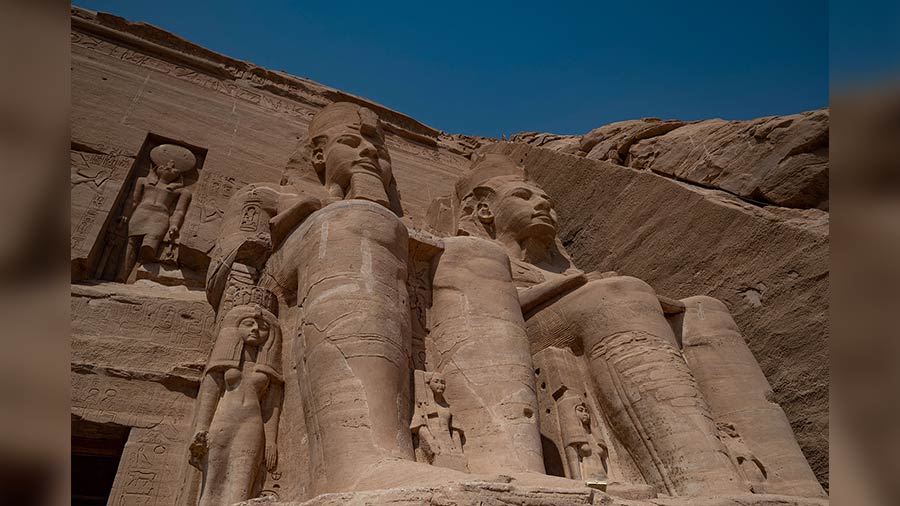
The Great Temple of Abu Simbel
There are two temples at Abu Simbel, the first one which is the bigger of the two is known as The Great Temple. This temple was built by Egyptian king Ramses II, referred to as “the beloved of Amun”, who ruled during 1279 – 1213 BC. Amun was one of the most important deities in ancient Egypt.
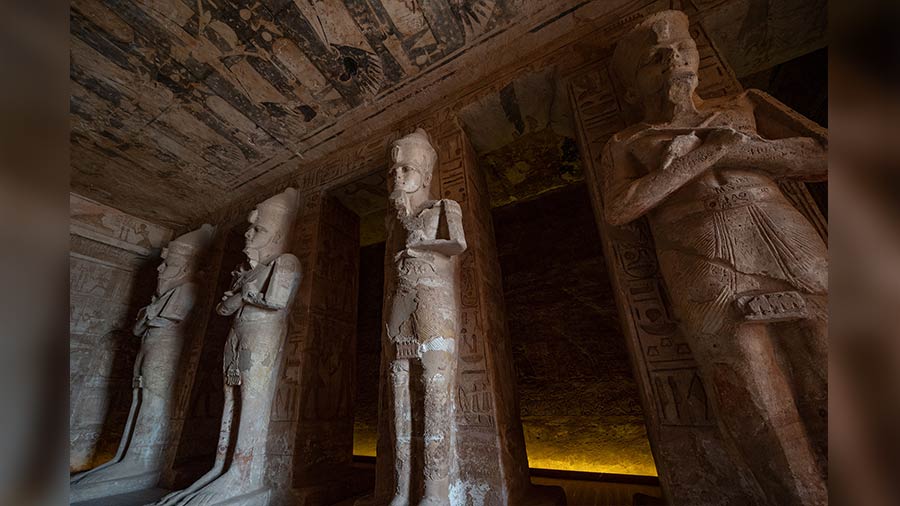
Pillared statues in the hypostyle hall inside The Great Temple
This temple was built to impress the Nubian people, it was almost like a show of strength for the Egyptians to maintain their dominance over them. The Nubian region was very important for the Egyptians since these regions were the main sources of gold and other riches. Thus, the Nubian people needed to fear and revere the Pharaos.
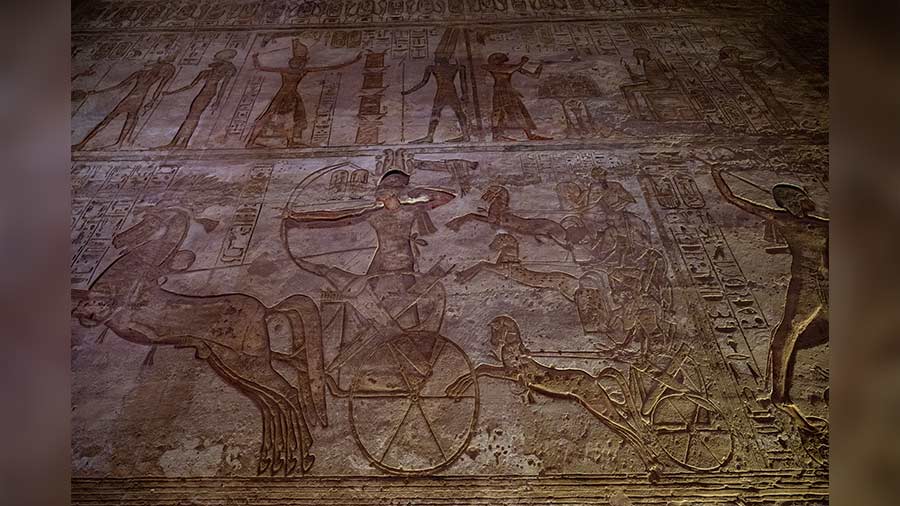
Bas-reliefs inside the Great Temple depicting war scenes
The rock-cut temple took around 20 years to be built, which lasted from 1264 – 1244 BC. The front façade of this temple features four grand statues, which are around 66 feet in height. All four statues are that of Ramses II, with a passage in the middle towards the temple inside. The statue immediately to the left is seen with its head and a portion of its torso fallen on the ground. Interestingly this was kept as it is and not restored during the relocation process, originally an earthquake had caused this and it was preserved in a similar way to maintain natural continuity.

Smaller chambers inside the Great Temple
Other smaller statues can all be seen having height below the knee of the four Ramesses II statues, which belong to his wives, mother, sons, and daughters. Right above the entrance is the image of Ra — the falcon-headed God.
Once inside the temple, one can see a pillared main hall (hypostyle) flanked by many small rooms on either side. All the walls around the different rooms and chambers have beautiful bas-reliefs depicting the life of King Ramses II mostly in battle scenes.
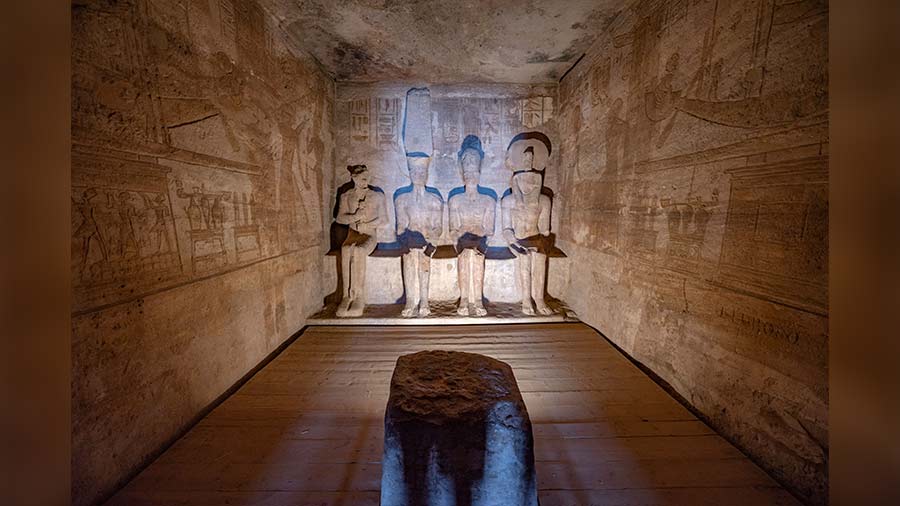
Inside the main sanctuary of the Great Temple
Inside the main sanctuary there can be seen four statues in seated positions, the first one that of Ra followed by deified king Ramses II, then God Amun and God Ptah.
The Small Temple of Abu Simbel
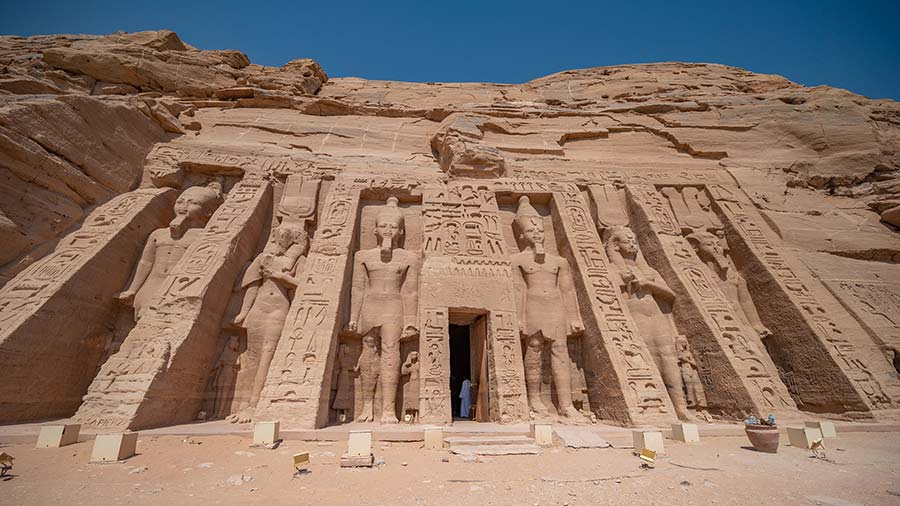
Front face of the Small Temple of Abu Simbel
Located on the right side, around 100 meters from the Great Temple, is another rock-cut temple known as the Small Temple. As the name suggests it’s much smaller in size and grandeur. This temple was also built by King Ramses II in honour of Hathor, who was the goddess of motherhood and his wife (chief consort) Nefertari.
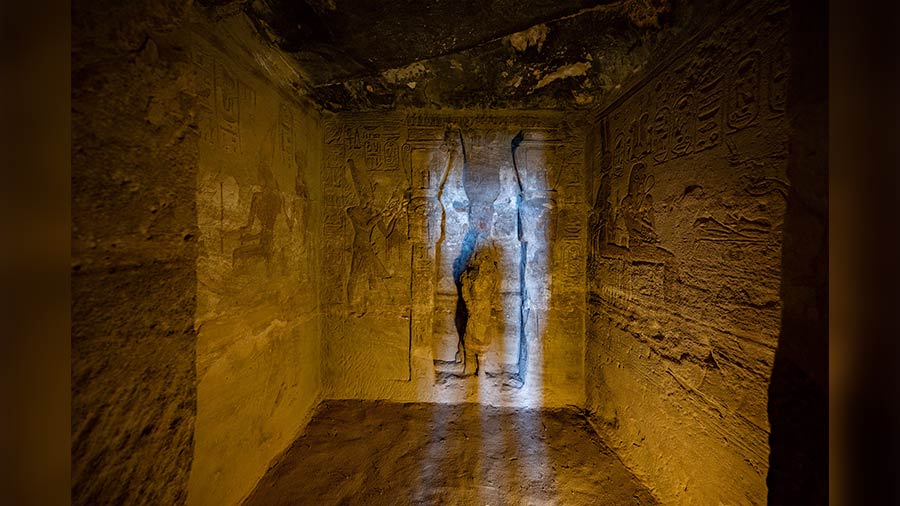
Inside the main sanctuary of the Small Temple
The front face of the temple has four large statues of Ramses II and two large statues of Nefertari — all 33 feet in height. It was not common to have anyone be given the same status that of a king by having their statues at the same height but here, there is an exception and we can see statues of Nefertari having the same height. Smaller figures of princes and princesses can be seen positioned below the knee level.
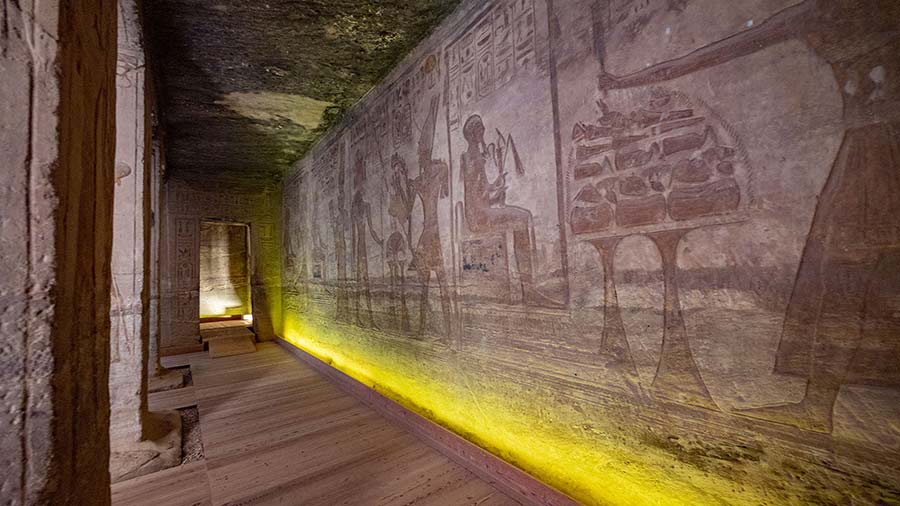
Side chambers of the Small Temple
Once inside the temple, one can see a six-pillared hypostyle hall, but much toned down. Similar to the great temple, the walls of this temple have multiple bas-reliefs depicting scenes of the queen and king with different gods. Inside the main sanctuary, one can see the image of Goddess Hathor.
The relocation of the temples
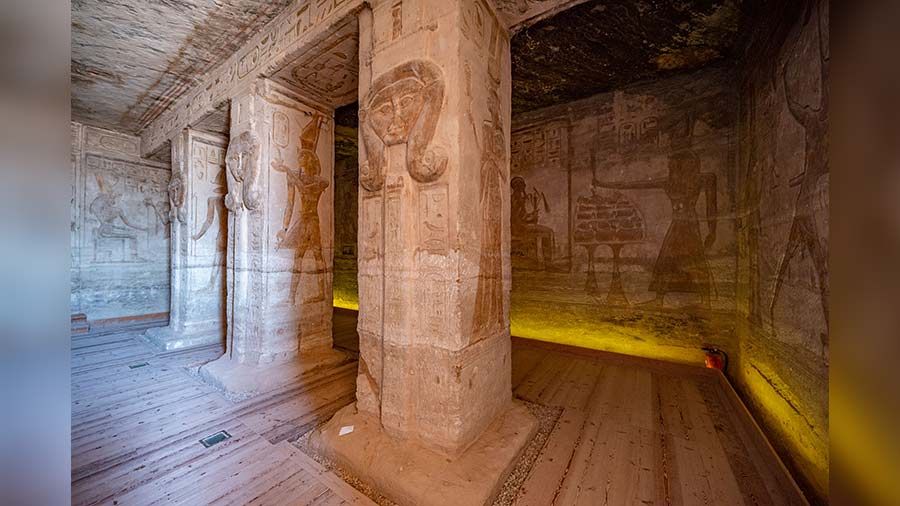
Pillared hall inside the Small Temple
When the high dam was being constructed on the river Nile at Aswan, there was a concern that the rising water level at Abu Simbel will completely submerge the temples. An international effort under the guidance of UNESCO was initiated and in the year 1964, a four-year-long project was taken up to carefully cut section by section the two temples and relocate them to higher ground.

Lake Nasser formed by the Aswan High Dam on the Nile River
This had enough clearance for Lake Nasser, which formed due to the dam at Aswan. So, what we now see is the reconstructed version while the original location remains submerged under the waters of Lake Nasser.
Astronomy and architecture
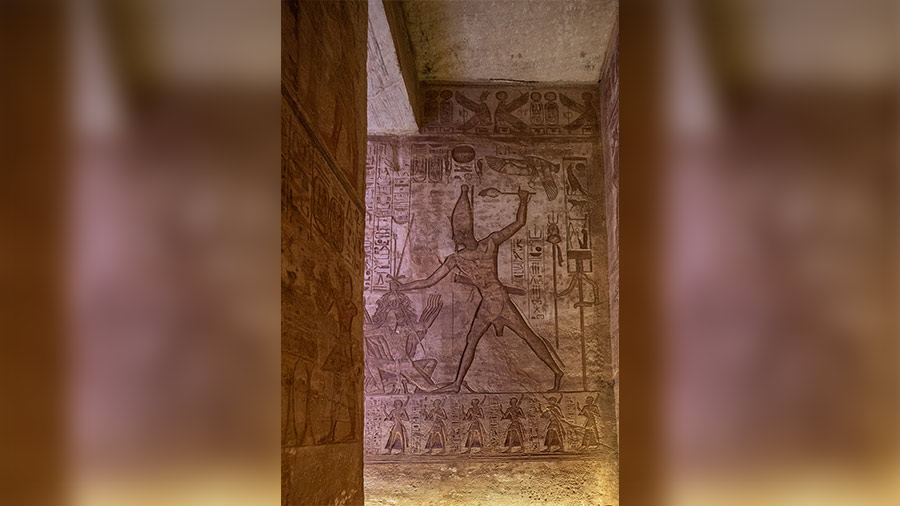
Bas-reliefs inside The Great Temple depicting war scenes
The Egyptians were masters of astronomy and proof of this can be seen here at Abu Simbel. Every year on February 22 and October 22, the rays of the sun enter the Great Temple and illuminate the faces of Ramesses II, Ra, and Amun while the face of Ptah is lit only half symbolising that he is a god of darkness.
How and when to visit Abu Simbel
- It takes around 3 to 4 hours (290 Km) to reach Abu Simbel on road from Aswan. Abu Simbel also has an airport with daily return flights from Aswan.
- Entry per person will cost 230 Egyptian Pounds per person, while students with valid ID cards need to pay 130.
- No charges need to be paid for non-commercial photography and videography with mobile or action cameras.
- There are scheduled Nile River cruises from Aswan to Abu Simbel, if you have time then you can avail of this service.
- A drive from Aswan to Abu Simbel will take you through some of the picturesque desert landscapes.
- It is advisable to carry drinking water and some light snacks since this being a prime tourist spot the cost of food and drinks tends to be on the higher side.
- Abu Simbel is located on the southern end of Egypt near the Sudan border, thus expect very high temperatures during summer. Winter is always the most preferable time to visit.
Working for more than a decade in the book retail & publishing industry, Subahdip Mukherjee is an IT professional who is into blogging for over fifteen years. He is also a globetrotter, heritage lover and photography enthusiast.



